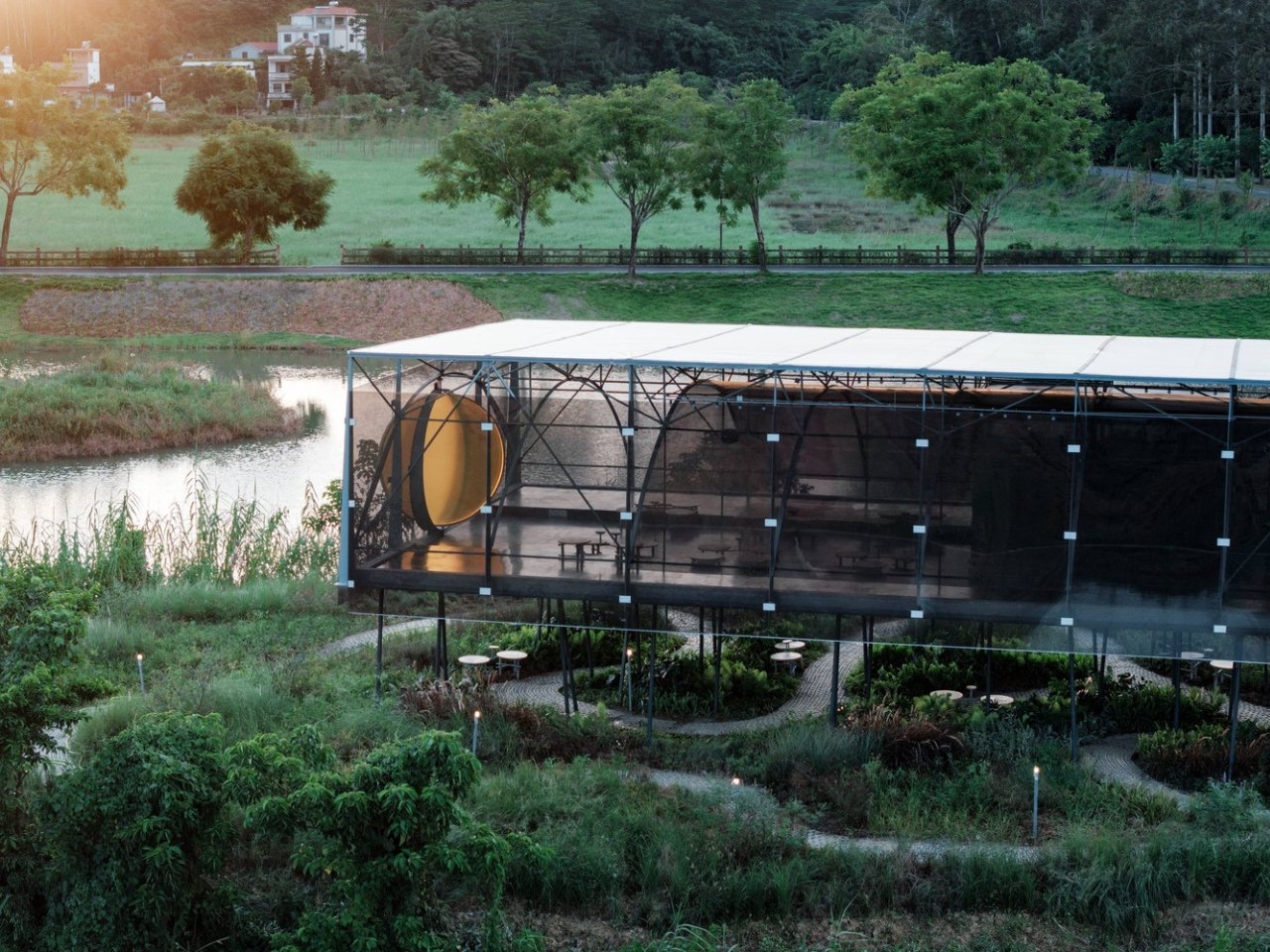Sometimes the most extraordinary transformations happen when architects listen to poetry. In Huizhou, China, Shanghai-based Atelier Guo has turned an abandoned greenhouse into something that feels like pure magic, creating the Moon Pavilion that bridges ancient verse with contemporary design.
The story begins with an old Chinese poem about a poet, intoxicated and smiling amid a field of flowers. Instead of creating a literal translation of this imagery, the architects took a more poetic approach, using the abandoned greenhouse as their canvas and layering it with abstractions of water, moon, flower, and boat .
Designer Name: Atelier Guo (photos by Hao Chen)
What makes this project so captivating is how it honors both the past and present. The original greenhouse may be gone, but its spirit lives on in unexpected ways. The architects studied the lightweight pin-jointed frame of the agricultural structure, understanding its proportions and temporary assembly language. They then reimagined these elements as something more permanent yet equally permeable.
The pavilion’s most striking feature is undoubtedly its lunar installation. On one facade, a rotatable art piece evokes the moon as a reflective, shifting presence, creating an artificial counterpart to its celestial original. When you see it from a distance, both the real moon and this artistic interpretation shimmer over the pond that encircles the structure. It’s the kind of detail that makes you stop and stare, wondering where reality ends and art begins.
The design itself tells a story of elevation and transformation. The second-floor concrete slab serves as raised terrain, inspired by the seasonal practice of lifting boats during dry seasons. Supported by an irregular array of steel columns that cleverly hide mechanical systems, the geometry recalls a vessel’s hull. The roof truss rises higher than the original greenhouse, creating the impression of a boat ready to drift into the night.
But perhaps the most thoughtful aspect is how the pavilion maintains the greenhouse’s original purpose while completely transforming its form. Though the physical structure wasn’t retained, the spirit of cultivation continues through carefully planned vegetation. The architects created a planted gradient that dissolves the architectural perimeter, using shade-tolerant species beneath the slab while native vegetation spreads beyond.
This approach to sustainability goes beyond just reusing materials. It’s about understanding the essence of a place and finding ways to honor it while creating something entirely new. The pavilion integrates passive ventilation and mist cooling systems, achieving comfort while maintaining that crucial visual lightness and connection to the surrounding landscape. Walking around the Moon Pavilion, you experience architecture as theater. The curved silhouette recalls the slow ascent of the moon over the horizon, and as you move along the water’s edge, the building seems to shift and change like the celestial body that inspired it.
This project, created in collaboration with artists Meilin Gao and Gang Xu, represents something special in contemporary architecture. It shows us that the most meaningful buildings aren’t always the biggest or most expensive, but those that understand the poetry of place and purpose. In transforming an abandoned agricultural structure into a space for contemplation and art, Atelier Guo has created something that feels both ancient and utterly contemporary. The Moon Pavilion proves that great architecture doesn’t just shelter us from the elements. Sometimes, it helps us see the world with new eyes, turning everyday moments into something extraordinary.
The post This Abandoned Greenhouse Is Now a Pavilion With a Rotating Moon first appeared on Yanko Design.

